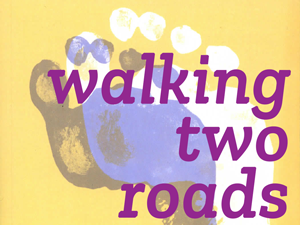Hans van Rappard
16 From: Rappard, H. van (2009). Walking Two Roads ― Accord and Separation In Chinese and Western Thought. Amsterdam: VU University Press, Chapter 6, pp. 165-172.
part 1 – part 2 – part 3 – part 4 – part 5 – part 6 – part 7 – part 8 – part 9 – part 10 – part 11 – part 12 – part 13 – part 14 – part 15 – part 16 – part 17
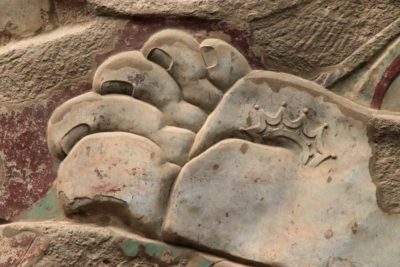
The concluding parts 16 and 17 intends to pull together the more heavy threads spun in this essay. It seems that most of them, wound from the fine material found in Confucianism, Daoism, Buddhism, and traditional Chinese science can be reeled in the following statements:
- The ten thousand things (including human beings) change continuously.
- This change happens of itself.
- The ten thousand things are interconnected and respond to each other.
- Intentional action distorts the interconnection (and, in Buddhism, prompts a reaction which is karma productive).
- [This is so because] intentional action is one-sided.
- That which is not one-sided is the mean.
- [Therefore] being and acting in accord with the mean constitutes the way towards the correction of one-sidedness and the repair of the unimpeded human response to the ten thousand things.
A quick glance at these statements, especially numbers three, four, and seven on the interconnection of all things and the importance of keeping watch over it might prompt the thought that the Chinese way of thinking is basically holistic.
Holism characterises the traditional Chinese view
Indeed, looked at from a comparative East-West perspective holism would seem a fitting qualification. Should one be asked to characterise traditional Chinese thinking ― and at this point even a mild simplification might he acceptable as long as it could serve as a provisional indication of its essential feature(s) ― then the ‘refusal to cut up heaven and earth’ might go a long way.
Would it be too much of a cliché to say that Western thinking tends to cut up reality? I think it is not. At least five or six cuts can be seen:
- sense perception versus rational thought,
- nature versus human society,
- individual versus society,
- body versus mind, and, closely related,
- feeling/ emotion (heart) versus thinking (mind), and finally,
- subject versus object.
Most of these opposites did already exist in ancient Greece even if in a weaker form than in the modern world, but the Chinese never conceived of them. The list is not exhaustive. The dichotomy between factual and moral knowledge, or facts and values, which has become so dear to modern science might be added. It could probably not have emerged without the dualities of heart versus mind, and subject versus object.
Moreover, one recalls that Chinese thinking divides down rather than add up because its point of departure is the whole. Thus, seen from the angle of these dichotomies, holism would seem to characterise the traditional Chinese view of world and man quite adequately.
Dynamic and differentiated
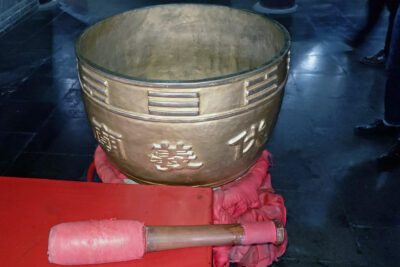
However, holism has a snag attached to it. I am thinking of the static and somewhat amorphous connotations of the word.
Although Chinese thinking may indeed be called holistic, it is by no means static. The highly influential Yijing and the general nature of traditional Chinese science as well as the Confucian, Daoist, and Chinese Buddhist views of the Way of human beings in the world can most certainly not be called static. Neither is it amorphous; as testified in particular by the Daoists and the Huayan school, there is ample room for the most subtle kinds of differentiation. Therefore, although it would not be wrong to call Chinese thinking holistic, there are good reasons to look for a more adequate term.
Accord and harmony
As an alternative I propose accord or harmony. Being musical metaphors, they imply a certain number of sounds that are in tune with each other, to use another musical metaphor.
Hence, harmony cannot be understood as amorphous; since a plurality of sounds are involved differentiation is clearly there.
Neither have harmony and accord such static overtones as holism. They cannot exist separately from the activity of playing music and are things of the present that immediately become things of the past. At every instant harmony must be actively realised.
Small wonder then, that the traditional writings as well as the secondary literature on Chinese thinking and especially on the Way abound with words as accord, harmony, resonance, and being in tune. Is not ‘listening’ the prime metaphor for being in accord with what is there at any particular moment?
Recall that at the ripe age of sixty Confucius ‘heard the biddings of Heaven with docile ear’. In the Zhuangzi a certain Tzu-chi, having lost himself, was able to “hear the piping of Heaven”.[1]
In some languages there is a relation between hearing and obeying as, for instance, in German where horchen means both to hear and to obey. In Plaks’ translation one finds that the mean (zhong) must be obeyed.
Indeed, several authors see harmony as the foundation of Chinese civilisation as opposed to that of ancient Greece. More than that, it is still casting its spell. Right from the beginning of his tenure in 2002 the speeches of President Hu Jin-tao have been filled with calls for harmony, while four years on the Chinese Communist Party approved a document on building a harmonious China. Though there is probably a heavy load of political rhetoric in this, the choice of the term is significant; no Western politician in his right mind would try to bank on harmony.
Thus, we will settle on a ‘musical’ or non-amorphous interpretation of holism as harmony, emphasising the interconnection between the ten thousand things, that is, an inconceivably complex accord rather than an enormous blur.
Actually, harmony is the theme that can be heard to recur in all Chinese pieces scored in the previous parts.
The heart-mind
To begin with the heart-mind, unimpeded response was seen to be the natural, though usually disrupted function of the senses, which ― together with their respective objects and consciousnesses ― are closely interconnected.
Thus, in the mental realm these triads constitute an instance of statement three above, as do the five aggregates for that matter.
And perhaps it is not unduly stretching the point to say that the Chinese view of yin and yang and other dualities as complementary also constitutes an instance of harmony, although an admittedly limited one.
Chinese poetry
Another example is offered by Chinese poetry where mutual response or resonance and interconnection function at the level of feeling. In contradistinction to poetry in ancient Greece, its Chinese counterpart does not attempt to represent or ‘put before the eyes’ but rather to indicate and allude.
The indirect relation with the world thus evoked is described in terms as breeze, aura, and mist. Not mediated by ideas and deliberation, poetry as pursued by the Chinese evokes an aura of feeling, an immediately felt response in which world and heart merge into each other.
Hence, it is no static representation of the world that ensues but quite the opposite, an intimate relationship with it, a mutual resonance. Such a world of non-duality can be savoured but not clearly stated.
Resonance and interconnection versus a transcendental ruler of the universe
Resonance and interconnection however, are by no means restricted to the domain of the heart-mind. They are just as important on the material plane where the harmonious interconnection between things actually performs the task that in Greek thinking was assigned to some kind of transcendental ruler of the universe ― an idea that in various forms maintained currency until the nineteenth century of Darwin and iconoclasts like Marx, Nietzsche, and Freud.
Clearly, traditional Chinese scientists thought much differently than their early Greek colleagues.
To the former, interrelation was the central notion rather than immutable substance. The Chinese key-words proposed by Needham were order and pattern.
He also mentioned organism but this proved a tricky term with a connotation of a goal towards which the organism is developing. Such linear goal-directed or teleological thinking is decidedly un-Chinese. This is also demonstrated by the divergence of Greek and Chinese medicine.

The anatomical interest of the Greek doctors, unique in ancient medicine, was induced by their teleological bent. What determined if a body-part was to be called an organ was if it enabled an activity. Organs were therefore conceived as tools which, and this is the crucial point, presuppose an actor by whom they are used.
However, the Chinese ‘organs’ were thought of as repositories of the vital breath (qi), not as tools, let alone as tools of a ruler of the body.
Volitional action and involuntary processes
This monumental divergence fits in perfectly of course with what was seen at the cosmic scale where there proved to be no place for a ruler either.
But this is not yet the end of the story. Together with the Greek preoccupation with human musculature their teleological way of thinking led these ancient medical doctor’s to draw a line between purposeful, that is, volitional action on the one hand, and involuntary processes on the other hand.
This distinction may be related to the gradual emergence in Western thinking of a view of the self as an autonomous actor. Developing over many centuries, it would eventually take the form of an independent and isolated activity centre, guided by a subjective point of view that would not have been possible to emerge in Chinese philosophy or the Buddhist perspective. For present purposes then, the difference between Chinese and Greek cosmological and medical thinking and its aftermath may be summarised by the words pattern and purpose, respectively.
Pattern versus purpose
Having touched on the activity centre it can be pointed out that whereas, generally speaking, in the West it is the self that is thought to move the world, in Chinese thinking it is the world that moves man.
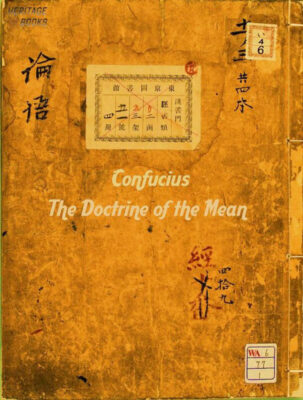 This came to the fore in poetry, whose essence may according to Jullien be found in the xing-level of indirection at which it is the world rather than the human subject that dominates the poetic relation.
This came to the fore in poetry, whose essence may according to Jullien be found in the xing-level of indirection at which it is the world rather than the human subject that dominates the poetic relation.
But domination is a infelicitous term here because what is meant is not a total blotting out of the subject but a world-subject mutuality which has no scope for deliberation and intention.
Again speaking generally, a similar type of world-self relation characterises the Confucian, Daoist, and Buddhist self.
Although the world-end of the relation may appear to be conceived of differently by these movements, in the final analysis all may be said to have been ‘imparted by the ordinance of Heaven’, as the first line of the Mean says. In other words, what is really important in all these cases is the mutuality of the relation. When ‘I look at the flower and the flower looks at me’, as a Chan saying has it, the relation involves neither one (the ‘I’ blotted out) nor two (‘I’ separated from the flower). Rather, I and the flower are harmoniously interconnected, locked in the resonance of a truly mutual relation.
The wilful intention versus wuwei
Regretfully however, human beings tend to fall out of the natural interconnection, which takes us to statements four through seven.
The problem ― the human condition one is tempted to say ― is stated in number four: intentional action distorting the interconnection of the ten thousand things.
In previous parts the function of wilful intention has been described as the most distorting manifestation of the ego, causing one-sidedness and partiality.
Thus, in order to maintain harmony one is counselled to return to and remain in the state of the heart-mind obtaining before intention, which in actual practice comes pretty much down to no-inclination to one of two sides, to wuwei, to being and acting in accord with the mean, to avoid picking and choosing, or finally ― although the list of possible descriptions is by no means exhausted ― to keeping the heart-mind at rest. These seemingly simple pointers actually sum up the Chinese ways of self-cultivation.
Accord versus separation
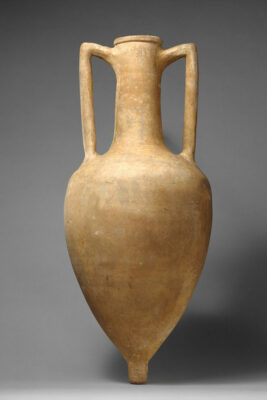
Self-cultivation was also found in Hellenistic philosophy and, at least at first sight appeared in a number of respects rather similar to its East Asian counterpart. In both Ways the practitioner is assumed to be in accord with the cosmos or, to quote Wordsworth (below), to be ‘wedded to this goodly universe’.
Moreover, according to both Ways the wedding party can only be had at the place where one’s own feet stand, that is, the here & now. Indeed, Chinese and Hellenists alike tried to cultivate the present moment though, remarkably, by walking quite contrary ways ― ways that may be put as pre-intentional versus intentional and also therefore, as ways of accord versus separation.
According to Allinson, Chinese thinking drew its motif from a relatively settled vision of the place of man in the world.[4]
If human beings are envisioned as being ultimately in accord with heaven and earth, the philosophical schools developed by this tradition are likely to stress the preservation or, if lost, the recovery of that harmony.
Belonging to the world versus freedom and autonomy
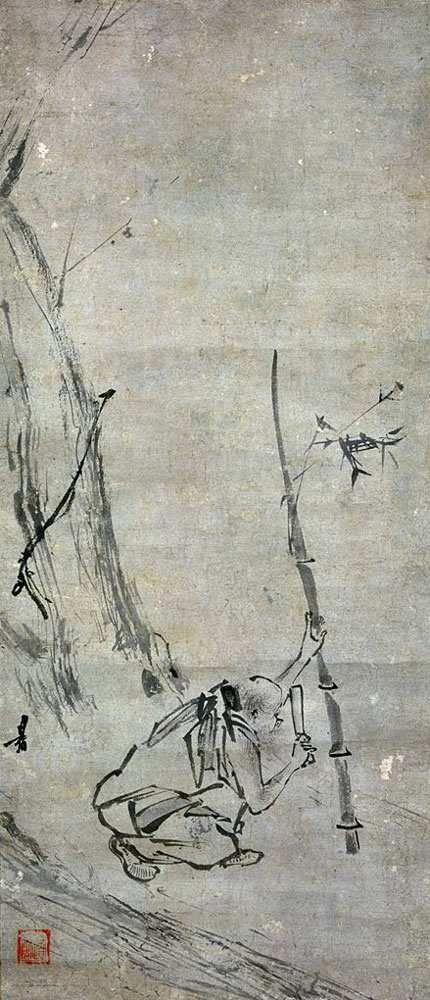
There is neither need, nor possibility to re-conceive the nature of man as being in or belonging to the world, as did Martin Heidegger (1889-1976) who, incidentally, has probably drawn on Buddhist and Daoist writings.[6]
Be this as it may, Heidegger’s allegedly new insight had been taken for granted in China since times immemorial.
As testified by landscape painting, which depicts man as forming part of nature, in the Chinese tradition humans do not feel separated from the cosmos. But perhaps harmony should not be exaggerated for everyday life. Undoubtedly, there have been many more Chinese who never thought of taking a step on the Way than those that actually did. Nevertheless, the culture in which they lived took harmony for its basis, and being in accord with heaven, earth, society, and one’s heart-mind as the goal of life.
This was already different in ancient Greece, while since the advent of modernity the Western tradition has rejected the possibility, and perhaps even more so the desirability of living in accord with the cosmos and one’s fellow men. Rather, harmony with one’s micro and macro environment is likely to be considered as jeopardising one’s freedom and autonomy.
The quest for the truth versus pointers to one’s ultimate accord with nature
If man feels out of tune with the world and is not moved by it, his predicament might well constitute a lusty prompting to embark on a quest for the truth about his place in the world.
The Chinese however, did not view the human being as separate from nature and saw no pressing need therefore to try and understand him from scratch, so to speak. Forming part of heaven ― and more importantly in this respect, also of the earth which he inhabits ― the Chinese thinker was not particularly inclined to consider himself as foreign to himself.
Moreover, not cutting up reality in heart and mind, mind and body, or subject and object such a view was simply not possible, and neither was there any need for it because essentially the truth was known and never really got lost. Had this been different, Allinson suggests, there would probably have been a much stronger drive to search for the truth.
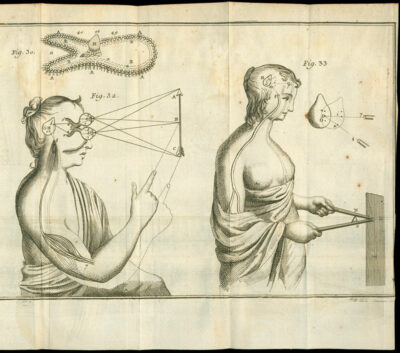
Moreover, not only does Western man see no clear place in the universe but, even worse, he is also convinced of being shot through with evil, which is another thought that never occurred to the Chinese. Hence, if we do not know ourselves and on top of that cannot trust ourselves either, there are weighty reasons to start searching for infallible and testable knowledge.
Indeed, Descartes provides a fine example. But on the other hand, if common sense holds that human nature is basically good the notion that a true way of understanding oneself and the world is required is less likely to arise. Rather, what is needed in that case are edifying pointers to one’s ultimate accord with nature, and this is precisely what the Chinese philosophical ways of life present.
Ideographic versus phonemic languages
Some authors explain the differences between the Chinese and Greek ways of thinking by their ideographic, respectively phonemic languages.
As they see it, the pictorial Chinese language did not particularly invite the development of abstract thinking. Although modern Chinese has no difficulty developing abstract concepts, there may be some truth in this with regard to the classical language, which is not much characterised by abstract concepts.
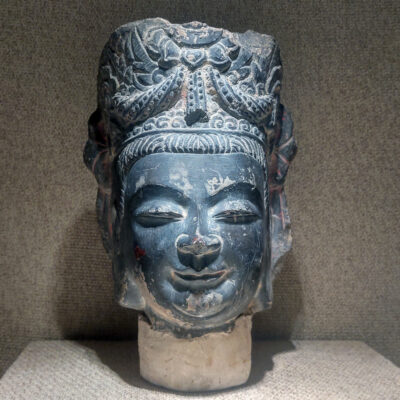
To give a few examples, the closest equivalent to freedom, an idea which has not stopped to excite the Western mind, was ‘natural spontaneity’ in China.
A more mundane example may be found in our concept of landscape, which, rather more concrete is ‘mountain-river’ in Chinese, while our word nature is written with the characters for self and so; nature, in other words, is ‘that which happens of itself’.
Clearly, this is quite different in the Greek or, more generally speaking, Indo-European traditions, which at an early date developed highly abstract reasoning and indulged in the kind of metaphysical speculations that the Chinese mind seems ill equipped for.
For instance, in the preface to Buddhist Logic Stcherbatsky expressed the hope that his translation of the Indian masters Dignaga and Dharmakirti might help to introduce their work to their “European brotherhood”. He also recounted that Buddhist logic was neglected after its first introduction to China in the sixth century, and that after its second introduction a century later, even if it did attract some attention failed to exert any significant influence.
- Allinson, R.E. (1989). An overview of the Chinese mind. In E. Allinson (Ed.). Understanding the Chinese mind (pp. 1-25). Oxford: Oxford U.P.
- Chan, Wing-tsit. (1963). A sourcebook in Chinese philosophy. Princeton: Princeton U.P.
- Fung, Yu-lan. (Transl). (1931/1995). A Taoist classic: Chuang-tzu. A new selected translation with an exposition of the philosophy of Kuo Hsiang. Beijing: Foreign Languages Press.
- Lao Sze-kwang (1989). On understanding Chinese philosophy: An inquiry and a proposal. In R.E. Allinson (Ed.). Understanding the Chinese mind (pp. 265-293). Oxford: Oxford U.P.
- Legge, J. (Transl). (1891/1962). The texts of Taoism. New York: Dover Publ.
- May, R. (2003). Heidegger’s hidden sources: East Asian influences on his work. In A.L. Macfie (Ed.). Eastern influences on Western philosophy (pp. 315-322). Edinburgh: Edinburgh U.P.
- Ransdorp, R. (2004). The pivot of Dao (translated title; in Dutch). Louvain: Dissertation Catholic University of Louvain.
- Schipper, K. (Transl). (2007). Zhuang Zi ― The complete writings (translated title; in Dutch). Amsterdam: Augustus.
- Schloegl, I. (Transl.). (1976). The Zen teaching of Rinzai. Berkeley: Shambala.
- Watson, (Transl). (1968). The complete works of Chuang Tzu. New York: Columbia U.P.
Notes
[1] Watson, 1968, p. 36
[2] Source: The Death of Socrates (1787) ― by Jacques-Louis David
[3] Source: Terracotta transport amphora ― late 3rd–mid-2nd century BCE, Stamped inscriptions indicate the month (Panamos) the amphora was made, the name of the magistrate (Pythogenes) in office at the time, and the name of the amphora’s maker (Hephaistion)
[4] Allinson, 1989, pp. 13-16
[5] Source: Huineng, the Sixth Patriarch Cutting the Bamboo ― Liang Kai
[6] May, 2003
[7] Source: Descartes, L’homme … “… I desire you to consider, I say, that these functions imitate those of a real man as perfectly as possible and that they follow naturally in this machine entirely from the disposition of the organs-no more nor less than do the movements of a clock or other automaton, from the arrangement of its counterweights and wheels.”

